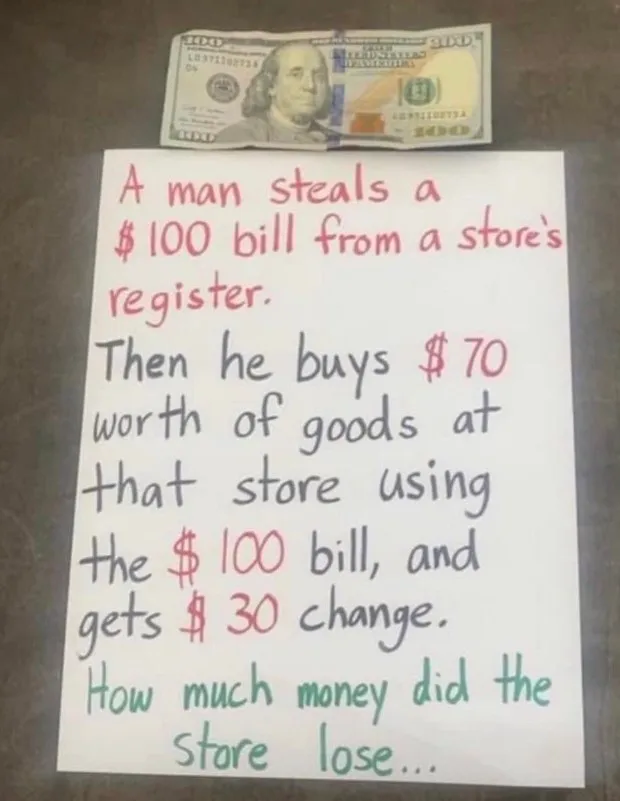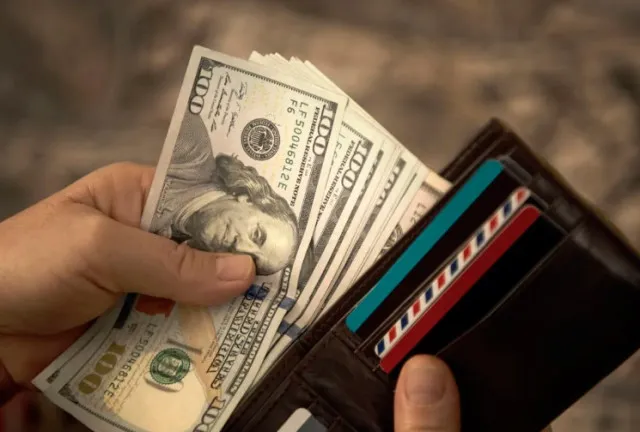On social media, many viewers stunned to solve the ‘a man steals $100 from a shop’ riddle. Can you solve it?
A brain teaser involving a $100 theft and a subsequent purchase has recently captured wide spread attention online.
This puzzle, shared on X (formerly Twitter) by the account Out of Context Human Race, which gaine attention.
This challenges participants to determine how much money a store lost after a thief stole $100 and made a purchase.
The viral $100 brain tease
On X platform, a user who goes by @NoContextHumans shared a viral $100 brain teaser.

The post has the caption: “I’m still trying to work out the answer…”
The brain teaser presents a situation where a thief steals $100 from a store’s register.
The thief then uses the stolen $100 to buy $70 worth of goods, receiving $30 in change.
The central question is: “How much money did the store lose?”
Social media reaction

Responses to the puzzle have varied widely. Some participants assert that the store lost $100.
In the comment selection, many viewers stunned by the viral $100 brain tease.
Many argued the total loss is $130, considering both the stolen $100 and the $30 in change.
There are also suggestions that the loss depends on the store’s profit margins on the transactions.
One person said: The amount of money was 30 but the also lost 70 worth of merchandise.
A second wrote: Man
+100 – 70 = 30 + (70 in goods)
Store
-100 – 70 ig = -170
If that not right I’m going back to preschool

While a third commented: Luckily the store regain some of loses in losing 100$ with the profit the gain with 70$ sales. So store lost less than 100$ for sure
Another added: The answer is still $100 c’mon people
$70 in merchandise plus the $30 change.
The $100 itself goes back into the register so the other two numbers (70 & 30) are the only remaining relevant factors at that point.
Solving the puzzle
To solve the puzzle accurately, it is crucial to analyze each component of the transaction:
Theft of $100
The initial loss is $100 when the thief steals the money.

Purchase and change
The thief then uses the stolen $100 to buy $70 worth of goods. The store effectively recovers the $100 used for the purchase but has to give $30 in change. This $30 represents a direct cash loss.
Loss of goods
The store also loses $70 worth of merchandise.
Total loss calculation
Combining the cash loss ($30) with the value of the goods ($70), the total loss amounts to $100.
This brain teaser illustrates how a seemingly simple problem can prompt extensive debate and analysis.
It emphasized the importance of scrutinizing all details rather than relying on initial impressions.

The puzzle’s viral success highlights the power of the internet in spreading engaging and thought-provoking content.
It reflects the public’s enthusiasm for challenges that stimulate critical thinking and foster discussion.
The $100 brain teaser not only serves as an intriguing puzzle but also as a reminder of the complexities behind everyday scenarios.
As we engage with such challenges, it’s essential to apply a curious and analytical mindset.
The next time you encounter a viral brain teaser, embrace the opportunity to exercise your problem-solving skills.
Enjoy the process of unraveling intricate puzzles.